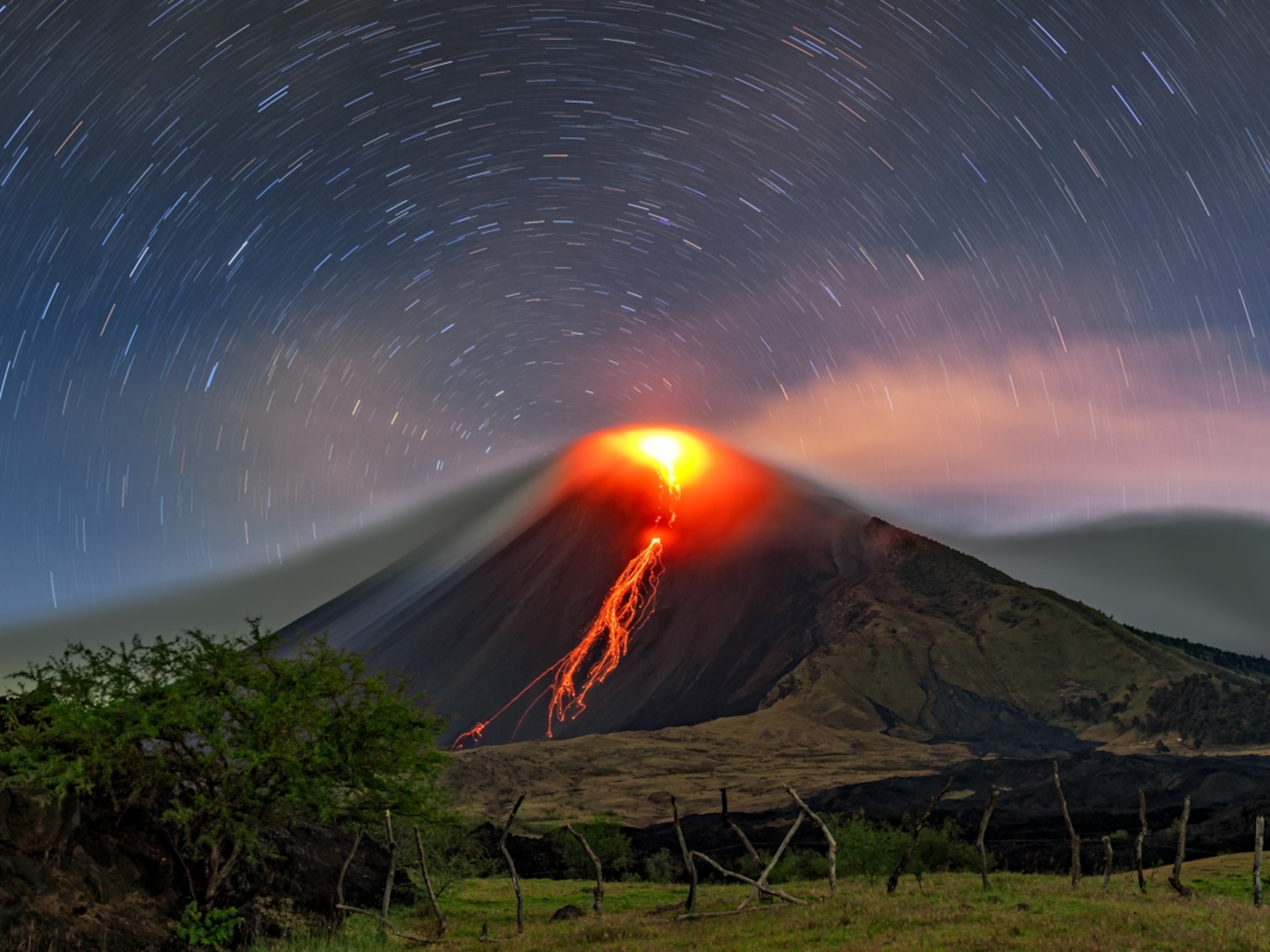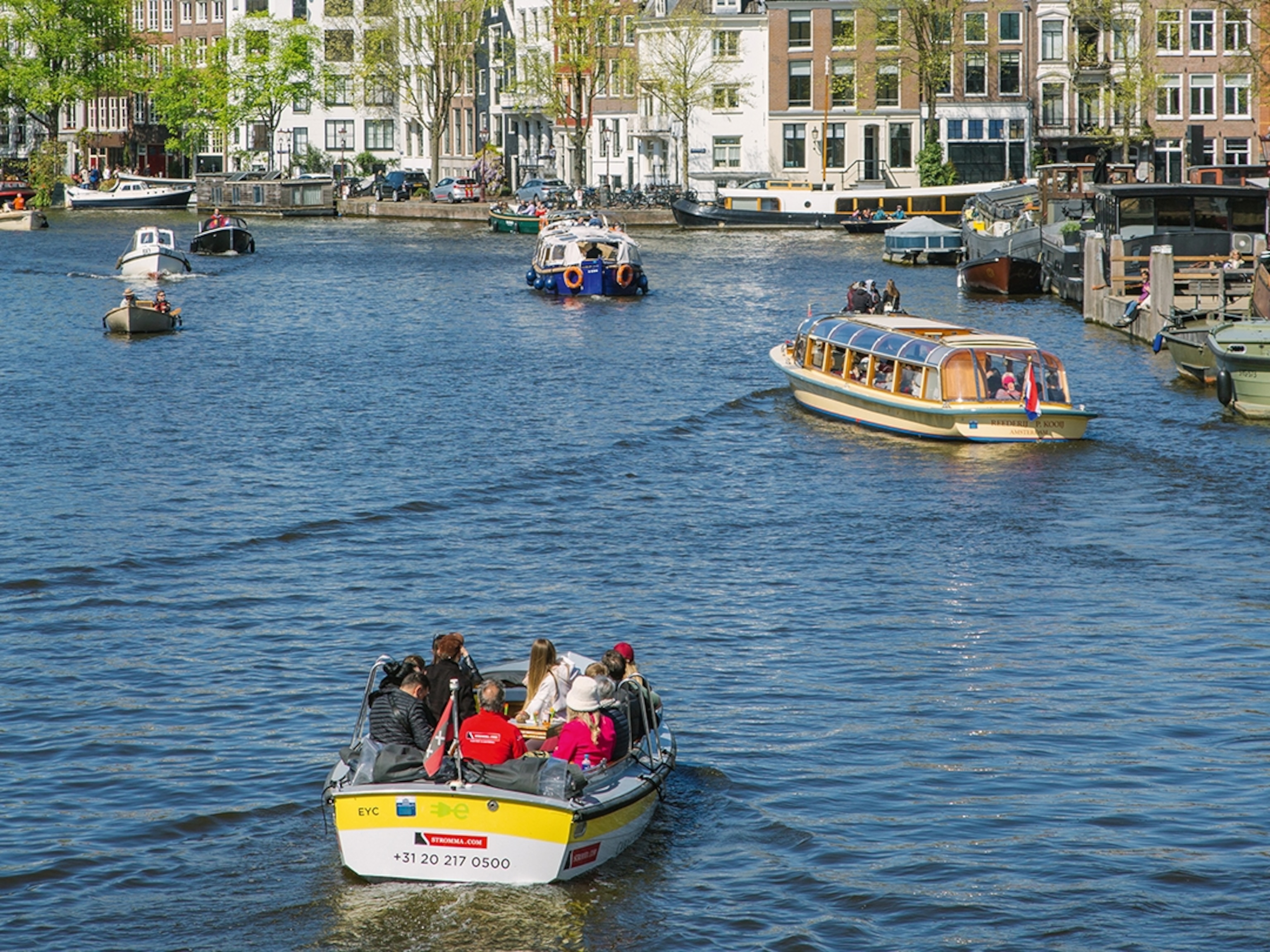
Maya Mystery Solved by "Important" Volcanic Discovery?
Volcanic ash found in canals may explain how cities survived with poor soil.
Even at ancient Maya cities far from volcanoes, ash rained down relatively frequently, a "spectacularly important" new study says.
The finding could explain how these ancient metropolises survived—and even prospered—despite having poor soil.
Extending south from southern Mexico, through Guatemala, and into northern Belize, the Maya Empire prospered from about A.D. 250 to 900, when it crumbled. (See an interactive map of the Maya civilization.)
Recently scientists discovered a distinct beige clay mineral in ruined canals at Guatemala's Tikal archaeological site—once the largest city of the southern Maya lowlands. The mineral, a type of smectite, derives only from the breakdown of volcanic ash.
Using chemical fingerprinting techniques, the team showed that the smectite at Tikal didn't come from dust ferried from Africa by air currents—the common assumption—but rather from volcanoes within Guatemala and in what are now El Salvador, Honduras, and Mexico.
"We believe we have a series of volcanic events" represented in the minerals, said team leader Ken Tankersley, an anthropologist at the University of Cincinnati.
(Get the full story of the rise and fall of the Maya in National Geographic magazine.)
Once-in-a-Lifetime Eruptions?
Prior to the new discovery, it was known that highland Maya cities closer to volcanoes could be drastically affected by eruptions. For example, the Maya village of Chalchuapa in El Salvador was completely buried when the nearby Ilopango volcano erupted in the sixth century A.D.
But until now, it's been unclear what effect, if any, eruptions had on lowland Maya cities hundreds of miles away. Now it appears that air currents regularly carried volcanic ash many miles away from the region's volcanoes. That's not especially surprising, considering that winds often carry dust all the way across the Atlantic Ocean, Tankersley said.
Tankersley and his team think their ash samples were deposited in Tikal over a 2,000-year period, from about 340 B.C. to A.D. 990. There's no way yet to determine just how many eruptions occurred, their frequency, or which volcanoes the ash came from, he said.
"If you were a Mayan, you would probably have experienced at least one of these events during your lifetime, and perhaps more, during certain periods," said Tankersley, who presented the team's findings at a meeting of the Society for American Archaeology in Sacramento, California, in late March.
Ashfall has been reported at Tikal as recently as the 1960s, according to University of Colorado anthropologist Payson Sheets.
(Pictures: See what the Maya Empire looked like.)
Supersoil Saved Maya Cities?
The new findings are "spectacularly important," Sheets said, because they could help explain a central mystery about lowland Maya cities.
"The literature consistently talks about the soils in these places as being very weak and fragile and nonproductive because they were derived from weathered limestone, which does not form a very good soil," said Sheets, an expert on the effects of volcanoes on Maya culture.
And yet archeological evidence suggests cities such as Tikal were able to support between 160 to 230 people per square mile (2.6 square kilometers).
"This is much denser than we would have thought possible from relatively poor tropical soil," said Sheets, who wasn't involved in the Tikal ash study.
But if the Maya-lowland soils were dusted with volcanic ash every few years or even decades, they would have been periodically enriched.
Volcanic ash can help make soil more fertile by increasing its permeability and porosity, thus improving its ability to retain water. Volcanic ash is also a source of plant-friendly minerals such as iron and magnesium.
"Periodic enrichment provides some of the answer for how those soils can support such dense populations," Sheets said.
(Related: "Superdirt Made Lost Amazon Cities Possible?")
Sheets estimates that even a light dusting of volcanic ashfall—say, a few millimeters—could have enriched the soil for "at least a decade or two."
A more substantial ash cover—perhaps a couple centimeters (nearly an inch)—might have boosted soil productivity for much longer.
The case isn't completely closed though.
For one thing, the tiny ash particles would have suffocated many plant-pollinating insects, Sheets said. And ash can encourage acid rain, which can harm crops.
Maya Made Lemonade of Volcanic Lemons
In general, Sheets said, volcanism was an integral part of ancient Maya life. Some of the temples in the highland Maya cities, for example, mimic sacred volcanoes.
"The temple buildings have doorways in the tops, where they burned incense, and the rising smoke was used to carry various messages to ancestor spirits and the deities," Sheets explained.
But whether temples at Tikal—where no volcanoes were visible—and other lowland cities were similarly inspired is unclear.
Volcanic eruptions also fit into the Maya worldview that life is full of phenomena that can be either hazards or opportunities, and that human behavior can tip the balance, Sheets said.
For the Maya, a smoking volcano wasn't always a harbinger of doom. Humans could turn its ash into a benefit, such as fertilizer or additives to strengthen pottery clay.
The Maya could also stall the eruption altogether—or so they thought.
"They did bloodletting rituals, respected the deities, fed the spirits of their ancestors, and so on" to try to control volcanoes, Sheets said.
"The Maya religion is very empowering to humans. People are at the crux of it."
Study leader Tankersley emphasizes that the unpredictable mountains, too, were at the crux of Maya culture. "They built temples in the shapes of volcanoes, and their ceremonies replicate volcanic events," he said.
"To the Maya, volcanoes were part of life—an essential part of their life."







